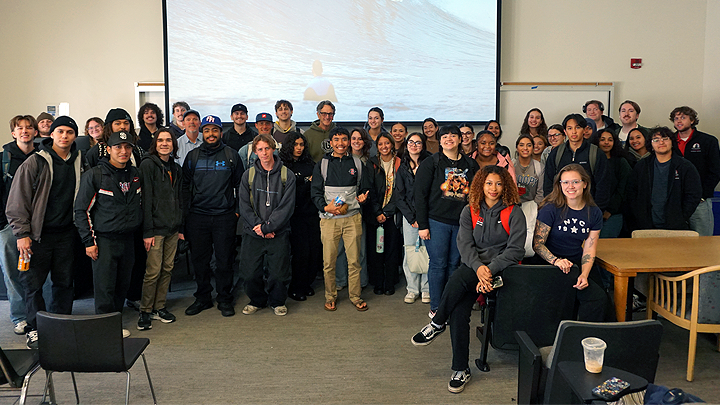Aztec Authors: Muslim Women and Feminism
An SDSU professor's books explore feminism in Islam.

Author: Huma Ahmed-Ghosh
Books titles: Contesting Feminisms: "Gender and Islam in Asia" and "Asian Muslim Women: Globalization to Local Realities"
Huma Ahmed-Ghosh, professor and chair of Women's Studies at San Diego State University, is also involved with the Advisory Board Center for Islamic and Arabic Studies, the Center for Asian and Pacific Studies and the International Security and Conflict Resolution department.
1) Give us a brief overview of what these books are about.
Contesting Feminisms, Contestory Spaces: Gender and Islam in Asia: this book addresses the pressing issues of feminisms and Asian Muslim women’s lives in the world. Post 9/11 has seen a rapid increase in discussions on Muslim women’s lives in Islamic and non-Islamic states. This book brings together essays that contend with issues of feminisms as they pertain to the realities of Muslim women’s lives in Asian countries and in the western diaspora.
Through a deconstruction of the concepts of feminism and empowerment, these authors locate Muslim women’s lives and their options and choices within locally produced gendered discourses. Towards that attempt, the authors expand the meanings of these concepts as well as create the space for further discussions and theorizing. By bringing these essays together, I fill a void in the literature on Muslim women in Asia, and bring to the forefront debates that are being engaged in to develop our understanding of transnational feminisms.
This book explores ways in which a multifaceted understanding of Islam can contribute to productive dialogue about the future of Muslim women in Islamic and secular.
Asian Muslim Women: Globalization to Local Realities: The essays in the previous volume reflect on how Muslim women in Asia strategize to empower themselves by appropriating the interpretations of religious texts, by appropriating Islam and Muslimness. The essays in this volume discuss women’s attempts to contest the state and politicized state interpretations of Islam to perpetuate a gender hierarchy. This book also looks at the impact of globalization on Muslim states and Muslim women’s lives.
These articles underscore the stereotyped perception of Muslim women being house-bound and veiled. As depicted through all the articles in the two volumes, Muslim women adapt to and contest existing norms in their societies through interrogation of dominant patriarchal discourses.
2) What inspired you to bring together essays on this topic?
I saw a palpable deficit in academic resources and materials on Muslim women in Asia. This observation became a reality when, four years ago, I was asked to teach a course on gender and Islam. I then realized the abundance of books, articles and films on women in the Middle East, but scattered and scarce resources on Muslim women in Asia.
This, coupled with the fact that majority of the Muslims live in Asia, led me to delve into the reasons of why such a disparity in resources and politicization of Middle East dominated western discourse on Muslim women in general.
Western fascination and simultaneous degradation of “the Muslim women” at a particular moment in the United States' relationship to the Muslim world also led to writings and publications in English that supported the national rhetoric of the West. So I decided to put forth Muslim women’s voices to express their agencies to counter the “victim” status ascribed to them by the West at the hands of “Muslim men.”
3) How does it connect with past research you’ve conducted?
I have been working with South Asian Muslim women immigrant in Southern California for the past two decades and women in Afghanistan for the past 10 years. I have published on these topics earlier, so these books expanded on my area of interest.
4) Why is it important for young people to read these books?
It is important for young people to read these books because they get a different perspective on Muslim women’s lives in other countries and in the western diaspora. Young people get an opportunity to engage in transnational feminist debates that provide the framework to understand their own position in the global arena and the lives of not just Muslims, but other minorities in the U.S.
5) What did you learn from editing this book?
After I put out a call for papers, I realized that Muslim women in each country had their own unique issues and that Muslim women’s lives cannot be homogenized as being similar.



